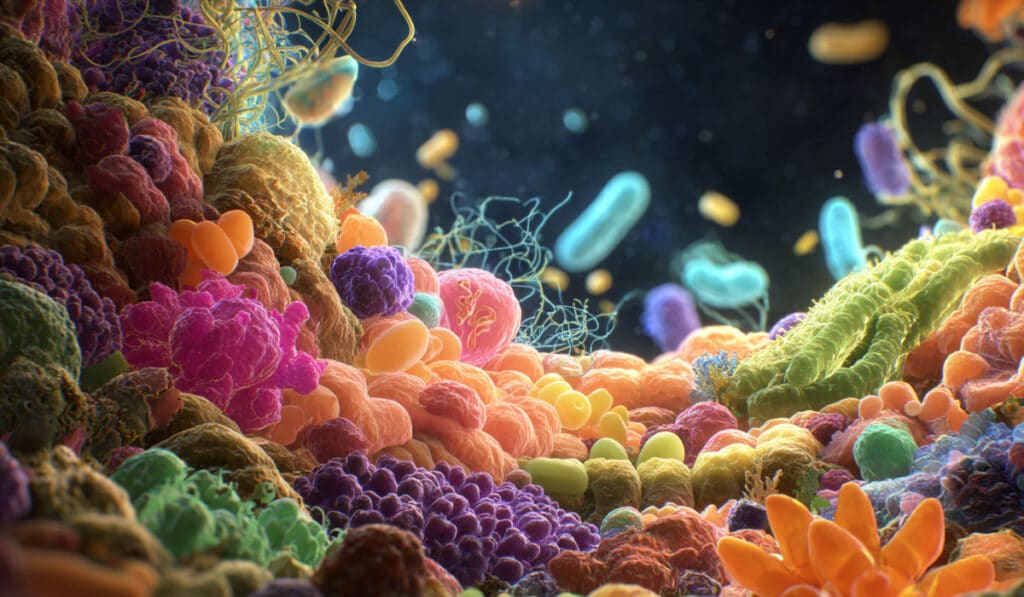The Ancient Wisdom Meets Modern Science on Exercise Benefits
Exercise has been praised for health perks since ancient times. But new research digs deeper. It shows how physical activity talks to your gut microbes.
This cross-talk happens through signals from working muscles. These signals, called myokines, link exercise to better disease outcomes.
A 2025 study in Gastroenterology highlights this. Led by John A. Hawley and team, it explains exercise’s role in gut health. For men over 40, staying active isn’t optional. It’s key to dodging age-related gut woes.
Think about it. As we age, our gut microbiome can lose diversity. That opens doors to problems. Exercise fights back.
Understanding the Gut Microbiome: Your Inner Ecosystem
Your gut hosts trillions of microbes. This community, the gut microbiome, acts like an organ. It aids digestion, immunity, and more.
Diversity matters here. A rich mix of bacteria means better health. Low diversity? It’s linked to gastrointestinal (GI) diseases, immune issues, and even cancers.
Regular physical activity (PA) boosts this diversity. It creates a more functional metabolome too. That’s the set of chemicals microbes produce.
These changes help with energy balance and metabolism. For guys pushing 50, this means steadier weight and fewer metabolic hiccups.
But how does exercise pull this off? It starts with muscle-gut chatter.

Muscle-Gut Cross-Talk: The Myokine Magic
When you work out, muscles release myokines. These are like messengers. They travel and influence distant organs, including the gut.
This communication ramps up host immunity. It fosters a diverse microbiome. And it plays a big part in energy homeostasis.
Picture this: You’re lifting weights or jogging. Your muscles contract and send signals. These hit the gut, tweaking microbe populations.
Result? More short-chain fatty acids (SCFAs) from good bacteria. SCFAs fight inflammation and support gut barrier strength.
The study notes individual responses vary. Diet, exercise type, and your starting microbiome all play roles. But the trend is clear: Move more, gut thrives.
Therapeutic Wins Against Gastrointestinal Diseases
GI diseases plague many men over 40. Think IBD, IBS, colorectal cancer (CRC), and liver issues. Reduced microbe diversity often fuels them.
Exercise counters this. It increases beneficial bacteria. This curbs inflammation and aids healing.
For IBD patients, PA might ease symptoms. Though links need more study, muscle health matters. Sarcopenia—muscle loss—worsens outcomes.
In IBS, exercise cuts symptoms. A randomized trial showed physical activity improves gut function.
Even for CRC, a diverse microbiome from exercise could protect. Certain bacteria exacerbate cancer; exercise shifts the balance.
Chronic liver diseases see benefits too. The gut-liver axis gets a tune-up with regular PA.
Bottom line: Exercise isn’t a cure-all. But it’s a powerful tool for prevention and management.
Diving into Molecular Mechanisms
Let’s get nerdy for a bit. The study outlines key pathways.
Exercise alters gut permeability—in good ways mostly. It strengthens barriers via myokines like IL-6 or BDNF.
AMPK and mTOR pathways activate. These regulate cell energy and growth, impacting microbes.
Bacteria produce metabolites like BAIBA or SCFAs. These feed back to muscles, creating a loop.
Inflammation drops. Immunity rises. For men battling age-related inflammation, this is gold.
Probiotics might amplify effects. But the exact exercise “dose” remains unknown. Mode, intensity, duration—all factors.
Start simple: Aim for 150 minutes of moderate PA weekly. Mix cardio and strength.

The Flip Side: When Exercise Goes Too Far
Not all exercise is gut-friendly. Prolonged, intense sessions in extreme conditions can harm.
They spike intestinal permeability. This lets toxins leak, causing GI symptoms.
Upper and lower gut issues arise. Think nausea or diarrhea during marathons.
But here’s the good news: These are short-lived. Benign and reversible with rest.
For most men over 40, moderate exercise avoids this. Listen to your body. Build up gradually.
Hydrate well. Eat fiber-rich foods to support microbes during workouts.
Future Paths: Targeting the Microbiome for Better Health
The research calls for deeper dives. Functional ‘omics—like metabolomics—will reveal more.
These tools spot microbiome traits tied to health or disease.
Validate in labs and trials. Then, craft targeted therapies.
Imagine personalized exercise plans based on your microbiome. Or fecal transplants paired with PA.
For at-risk groups, this could prevent GI diseases. Boost outcomes.
Stay tuned. Science is evolving fast.
Wrapping It Up: Move for Your Gut’s Sake
Exercise reshapes your gut microbiome. It fights GI diseases through smart mechanisms.
For men over 40, this means more vitality. Fewer doctor visits. Better life quality.
Don’t wait. Lace up those shoes. Hit the gym or trail.
Your gut—and future self—will thank you.
Over 40 and Wanting To Live A Better Life?
If you are a man who is over 40 and wanting to break free of the rut that you are in and live the life you desire, be sure to sign up for my FREE newsletter Freedom Over 40. Each week I put out an actionable step that you can take to help you build the life you want, not the one that others have built for you.
Sign up now and start changing your life for the better!






